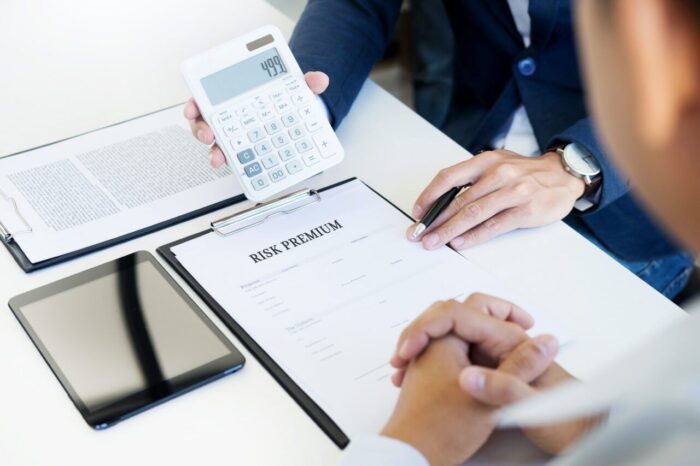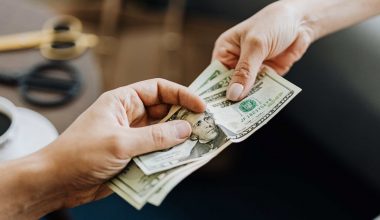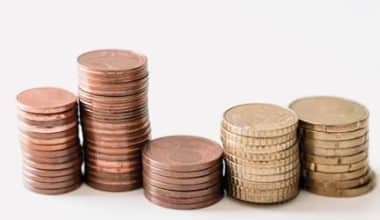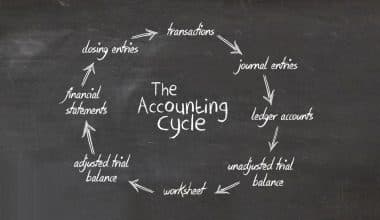The deciding factor in whatever investment a person decides to pursue against another is often whether or not the investment provides a return that is adequate to compensate for the level of risk that applies. That’s why you must pay due diligence to your equity risk premium. With that, you can find a juxtaposition between the risk and the possible interest. Read on to know about, the current equity risk premium and the effective formula to calculate it.
Equity Risk Premium (ERP) refers to the difference between equity/stock returns and the risk-free rate of return. The risk-free rate of return can be compared to longer-term government bonds provided there is no government default risk. It refers to the excess return a stock gives its holder beyond the risk-free rate for the risk the holder is taking. It is the compensation the investor receives for investing in equities rather than risk-free securities and assuming a higher level of risk.
The correlation between the ERP and the level of risk is direct. The greater the risk, the greater the difference between stock returns and the risk-free rate, and thus the greater the premium. In addition, empirical evidence supports the concept of equity risk premium. It demonstrates that every investor will be rewarded for taking greater risks over the long term.
For an investment to remain viable for a rational investor, an increase in the risk of an investment must be accompanied by an increase in the possible gain from that investment. For instance, if government bonds offered a return of 6 percent, a rational investor would only invest in a company’s shares if it offered returns of at least 6 percent, say 14 percent. Here, fourteen percent minus six percent equals eight percent as the equity risk premium.
Overview
Generally, stocks are high-risk investments. There are risks to investing in the stock market, but there is also the potential for substantial returns. Thus, you compensate investors with higher premiums when investing in the stock market. An equity risk premium is the excess return get over a risk-free investment such as a U.S. Treasury bill (T-bill) or a bond.
The equity risk premium is based on the risk-reward tradeoff concept. As this is a forward-looking number, the premium is theoretical. No one can predict the future performance of equities or the equity market. So it is impossible to predict how much a particular investment would earn. Instead, an equity risk premium is an assumption based on a criterion that looks backward. It examines the performance of the stock market and government bonds over a predetermined time period and uses this past performance to estimate the potential for future returns. The estimations vary widely based on the time period and computation method.
Equity Risk Premium Current
There are two major causes of investment risk: First, inflation produces a decline in the real value of an asset. After one year, an investment of 100 U.S. dollars with three percent inflation is worth only 97 U.S. dollars. Also of interest to investors are the risks of project failure and non-performing loans.
In 2021, the average market risk premium in the United States decreased to 5.5%. This indicates that investors want a little higher rate of return for investments in that country. As compensation for the risk they face. Since 2011, this premium has fluctuated between 5,3 and 5,7 percent.
Equity Risk Premium Formula in CAPM
The equity risk premium formula can be calculated using the estimations and judgment of the investors. The Equity risk premium is calculated as follows:
Rate of Return on the Stock Market − Risk-free Rate =Equity Risk Premium (on the Market)
The stock indexes such as the Dow Jones industrial average or the S&P 500 can be used as a barometer to justify calculating the equity risk premium projected return on a stock based on the most realistic value because they provide a reasonable assessment of the historical returns on the stock, using the above formula.
is the additional profit an investor receives for taking on risk above the risk-free rate. The correlation between the degree of risk and the stock risk premium is direct.
Now, on the market, the investor will select a bond that offers a bigger return than 4%. Suppose an investor chooses a firm stock with a 10 percent market return. In this case, the equity risk premium will equal 10% – 4% = 6%.
Interpretation of Equity Risk Premium in CAPM
- We are aware that the risk associated with debt investments, such as bonds, is often less than that of equity investments. Similar to preferred stock, an investment in equity shares does not guarantee a constant payout. As dividends are paid only if the firm achieves a profit and the dividend rate fluctuates.
- People buy in equities shares with the expectation that the share’s value will improve in the near future and that they will obtain larger returns over the long term. However, there is always a chance that the value of a share would decline. This is what we refer to as an investor’s risk.
- Moreover, the risk is always high if the probability of obtaining a better return is high. If the probability of obtaining a smaller return is high, the risk will always be reduced; this is known as a risk-return trade-off.
- The risk-free rate refers to the rate of return that an investor on a hypothetical investment can get over a particular period without incurring a loss. This rate rewards investors for concerns emerging during a specific period, such as inflation. The rate on risk-free bonds or long-term government bonds is the risk-free rate since the probability of a government default is to be minimal.
- The higher the needed rate of return, the riskier the investment. It depends on the investor’s needs: the risk-free rate and equity risk premium contribute to determining the stock’s final rate of return.
Use of Equity Risk Premium in the Capital Asset Pricing Model (CAPM)
The CAPM model is utilized to determine the relationship between the expected return and the systemic risk of a company’s securities. Using the risk-free rate, the expected rate of return on the market, and the beta of the security. You can use the CAPM model to price hazardous securities and compute return on investment
The CAPM equation is:
Expected Return on security = Risk-free rate plus security’s beta (Expected market return – risk-free rate).
= Rf plus (Rm-Rf)
Where Rf represents the risk-free rate, (Rm-Rf) represents the ERP and represents the stock’s volatility or systematic risk measurement.
In CAPM, to explain the pricing of shares in a diversified portfolio. It plays a significant role in that a company seeking to attract capital may use a number of strategies to manage and justify the market’s expectations on issues such as stock splits.
Example
Using the method, the equity risk premium of the market would be 12.50 percent (i.e., 15 percent – 2.50 percent = 12.50 percent) if the rate of return on TIPS (30 years) is 2.50 percent and the average annual return (historical) of the S&P 500 index is 15 percent. Therefore, the required rate of return for an individual to invest in the market as opposed to risk-free government bonds is 12.50 percent.
In addition to investors, firm managers will be interested in the ERP since it will give them the benchmark return they must reach to attract more investors. For instance, one is in the equity risk premium of XYZ Company, whose beta coefficient is.
is 1.25 when the market’s prevalent equity risk premium is 12.5 percent. Therefore, he will compute the company’s equity risk premium, which amounts to 15.63 percent, using the provided information (12.5 percent x 1.25). This demonstrates that XYZ should earn a rate of return of at least 15.63 percent in order to draw investors away from risk-free bonds.
Advantages and Drawbacks
Using this premium, one can establish portfolio return expectations and choose asset allocation policies. For instance, a higher premium indicates that one would invest a larger proportion of their portfolio in equities. Also, CAPM ties the projected return of a stock to the equity premium. Thus, a stock with greater risk than the market (measured by beta) should give a return in excess of the equity premium.
On the other hand, the disadvantage involves the assumption that the stock market in question will continue to perform as it has in the past. There is no assurance that the prediction will be accurate.
How Do You Calculate the Equity Risk Premium?
To determine the equity risk premium, first, find the difference between the expected real return on stocks and the expected real return on safe bonds. Alternatively, take the risk-free return and subtract it from the expected return on assets. This will give you the equity risk premium (the model makes a key assumption that current valuation multiples are roughly correct).
What is High-Risk Equity?
Concentration risk is a common issue for equity funds that are considered high risk because the funds’ holdings are typically restricted to only one or two industries. Despite the fact that they invest in well-known large-cap businesses, concentrated funds often hold no more than 25 to 30 stocks, which raises the danger of concentration.
What is the Current Equity Risk Premium for 2023?
In 2023, the typical market risk premium in the United States reached 5.6 percent, representing a small increase from the previous year. This would imply that investors require a somewhat lower return on their investments in that country as a form of compensation for the increased risk that they are subjected to. Since 2011, the cost of this premium has consistently ranged between 5.3 and 5.7 percent.
Is High Equity Good for a Company?
If a corporation has a high equity ratio, this indicates that it uses fewer loans to finance its assets, which is a positive sign. This makes the company more secure during times of economic uncertainty and increases the likelihood that it will be able to rapidly pay off its debts. Additionally, it demonstrates that the corporation is doing a good job of managing its assets.
Why is Equity Better than Debt?
In point of fact, the real cost of debt is the interest payment that must be made. But there is a hidden cost associated with equity, and that is the financial return that shareholders anticipate making. Because stock is a riskier investment, the “hidden cost” associated with it is higher than the cost associated with debt. The interest expense can be deducted from income, which lowers the total amount that must be paid in taxes.
Market Risk Premium vs Equity Risk Premium
A risk premium is typically in two distinct ways: market risk premium and equity risk premium.
#1. Equity Risk Premium
The equity risk premium is the excess return over the risk-free rate you can get this by investing in a single stock. The premium you can receive is directly proportional to the riskiness of the stock; a stock with a higher risk requires a higher equity risk premium in order to be appealing to investors.
The equity risk premium is perpetually perspective. If we are to use the equity risk premium as a tool to inform investment decisions, we must forecast the future return of a stock.
To predict future returns, we examine the past and base our estimate on past returns. Estimates may vary significantly depending on the selected period of past performance.
#2. Market Risk Premium
In addition, the market risk premium is the additional return an investor to keep a market portfolio. Such as a whole market index fund, as opposed to risk-free assets, such as government bonds.
The market risk premium, like the equity risk premium, is a forward-looking theoretical instrument. We estimate the overall return of a market portfolio using the historical performance of a benchmark stock index, such as the S&P 500 or the Dow Jones Industrial Average (DJIA), rather than the historical performance of individual stocks.
What is Equity Share Premium?
When compared to the total amount of money that a company receives for newly issued shares, the “share premium” can be thought of as the difference between the “par value” of a firm’s shares and that amount of money. This account can be used to write off equity-related expenses like underwriting charges, and it also has the potential to be utilized to issue bonus shares. Examples of such expenses include:
What Does a 15% ROE Mean?
Return on Equity is a profitability metric that compares the profits made by a company to the value of its shareholders’ equity. This comparison is done to determine how profitable a company is. The Return on Equity (ROE) is expressed as a percentage and is arrived at by dividing the Net Income by the Shareholder’s Equity. A return on equity of 15% signifies that the company generates an income of $15 for every $100 of its total share capital.
Is Risk Premium the Same as Return?
A risk premium can be defined as the investment return on an asset that is anticipated to be higher than the rate of return on investments that do not involve any risk. Investors are given some type of compensation in the form of an asset’s risk premium. It is a payment made to investors in exchange for their willingness to accept a higher level of risk in a particular investment compared to the level of risk that would be present in a risk-free asset.
What Do Risk Premiums Mean for You?
Individual investors can use the risk premium and CAPM to guide their own investment decisions. Numerous financial websites provide betas and historical market return data for stocks, whereas the U.S. Treasury offers information on government bond rates. Always choose a bond maturity that corresponds with your specific investing horizon.
Risk premium can assist with asset allocation decisions. You don’t even have to compute it yourself; financial data providers like Statista and the Stern School of Business at New York University give historical and present equity risk premiums.
When the equity risk premium is larger, investors may consider purchasing equities. When interest rates are low, fixed-income securities are more appealing. This information might be helpful when deciding how to distribute your 401(k) savings between equities and bonds. The CAPM can inform your thinking about particular securities while underlining the role of risk in projected return when analyzing specific stocks.
Conclusion
This suggests to the company’s stakeholders that high-risk stocks will beat lower-risk bonds over the long term. The relationship between risk and the equity risk premium is straightforward. The greater the risk, the greater the difference between the risk-free rate and stock returns. Therefore, the premium is significant. It is a highly useful statistic for selecting stocks worth the investment.
FAQs
Is cost of equity the same as equity risk premium?
The equity risk premium is a crucial component of the capital asset pricing model (CAPM), which determines the cost of equity, the formula is not the same too. – i.e., the cost of capital and the required rate of return for equity owners.
What does SML mean in finance?
The security market line (SML) is a line drawn on a chart that represents the capital asset pricing model graphically (CAPM).
Is higher risk premium better?
Riskier investments provide the potential for larger returns, rewarding investors for assuming a greater risk of financial loss.






